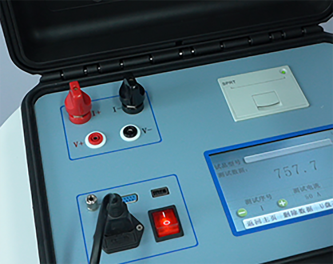 English
English



-
 Afrikaans
Afrikaans -
 Albanian
Albanian -
 Amharic
Amharic -
 Arabic
Arabic -
 Armenian
Armenian -
 Azerbaijani
Azerbaijani -
 Basque
Basque -
 Belarusian
Belarusian -
 Bengali
Bengali -
 Bosnian
Bosnian -
 Bulgarian
Bulgarian -
 Catalan
Catalan -
 Cebuano
Cebuano -
 China
China -
 China (Taiwan)
China (Taiwan) -
 Corsican
Corsican -
 Croatian
Croatian -
 Czech
Czech -
 Danish
Danish -
 Dutch
Dutch -
 English
English -
 Esperanto
Esperanto -
 Estonian
Estonian -
 Finnish
Finnish -
 French
French -
 Frisian
Frisian -
 Galician
Galician -
 Georgian
Georgian -
 German
German -
 Greek
Greek -
 Gujarati
Gujarati -
 Haitian Creole
Haitian Creole -
 hausa
hausa -
 hawaiian
hawaiian -
 Hebrew
Hebrew -
 Hindi
Hindi -
 Miao
Miao -
 Hungarian
Hungarian -
 Icelandic
Icelandic -
 igbo
igbo -
 Indonesian
Indonesian -
 irish
irish -
 Italian
Italian -
 Japanese
Japanese -
 Javanese
Javanese -
 Kannada
Kannada -
 kazakh
kazakh -
 Khmer
Khmer -
 Rwandese
Rwandese -
 Korean
Korean -
 Kurdish
Kurdish -
 Kyrgyz
Kyrgyz -
 Lao
Lao -
 Latin
Latin -
 Latvian
Latvian -
 Lithuanian
Lithuanian -
 Luxembourgish
Luxembourgish -
 Macedonian
Macedonian -
 Malgashi
Malgashi -
 Malay
Malay -
 Malayalam
Malayalam -
 Maltese
Maltese -
 Maori
Maori -
 Marathi
Marathi -
 Mongolian
Mongolian -
 Myanmar
Myanmar -
 Nepali
Nepali -
 Norwegian
Norwegian -
 Norwegian
Norwegian -
 Occitan
Occitan -
 Pashto
Pashto -
 Persian
Persian -
 Polish
Polish -
 Portuguese
Portuguese -
 Punjabi
Punjabi -
 Romanian
Romanian -
 Russian
Russian -
 Samoan
Samoan -
 Scottish Gaelic
Scottish Gaelic -
 Serbian
Serbian -
 Sesotho
Sesotho -
 Shona
Shona -
 Sindhi
Sindhi -
 Sinhala
Sinhala -
 Slovak
Slovak -
 Slovenian
Slovenian -
 Somali
Somali -
 Spanish
Spanish -
 Sundanese
Sundanese -
 Swahili
Swahili -
 Swedish
Swedish -
 Tagalog
Tagalog -
 Tajik
Tajik -
 Tamil
Tamil -
 Tatar
Tatar -
 Telugu
Telugu -
 Thai
Thai -
 Turkish
Turkish -
 Turkmen
Turkmen -
 Ukrainian
Ukrainian -
 Urdu
Urdu -
 Uighur
Uighur -
 Uzbek
Uzbek -
 Vietnamese
Vietnamese -
 Welsh
Welsh -
 Bantu
Bantu -
 Yiddish
Yiddish -
 Yoruba
Yoruba -
 Zulu
Zulu
hipot wire testing
Understanding Hipot Wire Testing Importance and Process
Hipot testing, short for high potential testing, is a crucial process used in electrical safety to ensure that electrical devices and systems can resist high voltage stress without failing. One of the specific applications of hipot testing is in wire testing, which focuses on verifying the integrity and safety of electrical wires used in various applications. This article explores the significance of hipot wire testing and outlines the key processes involved.
Why Hipot Wire Testing is Essential
Electrical wires are the backbone of any electrical system, providing the critical pathways for electrical current. As such, it is imperative that these wires are capable of withstanding high voltage conditions. The primary objective of hipot wire testing is to detect any potential insulation failures before they can lead to hazardous conditions such as short circuits, electrical shocks, or fires.
In industries where electrical safety is paramount—such as manufacturing, telecommunications, and aerospace—conducting regular hipot tests on wiring assemblies is a vital quality assurance step. It helps ensure compliance with national safety standards and regulations, minimizing the risk of accidents or equipment failure. In addition, passing hypothetical testing can improve customer confidence and mitigate liabilities associated with defective products.
The Hipot Testing Process
1. Preparation Before conducting a hipot test, it is essential to prepare the wire sample appropriately. This involves ensuring that the wires are properly connected, and any unnecessary components that could give false readings are removed. The environment should also be checked to meet safety requirements, ensuring there are no conductive pathways that could interfere with the test.
hipot wire testing

2. Setting the Test Parameters The next step involves setting the necessary parameters for the test, particularly the voltage level. The hipot test voltage is typically higher than the normal operating voltage, usually ranging from 500V to 5000V depending on the wire specifications and industry standards. Choosing the right voltage is critical, as it must be sufficient to reveal any weaknesses in insulation without causing unnecessary damage.
3. Conducting the Test Once the parameters are set, the actual hipot test can be conducted. A hipot tester applies the designated high voltage across the wire insulation while monitoring for any leakage current. A low leakage current usually indicates that the wire insulation is intact, while a higher leakage current suggests potential insulation breakdown.
4. Evaluating Results After the test is completed, the results must be carefully evaluated. A pass result indicates that the wire can safely handle the required voltage levels, while a fail result necessitates further investigation and remediation. This may involve inspecting the insulation for physical damage, verifying wire integrity, or even replacing defective wiring.
5. Documentation Proper documentation of the test results is also critical for compliance and quality assurance. This ensures traceability and accountability, allowing manufacturers and users to track safety records and make informed decisions about the use and maintenance of electrical wires.
Conclusion
Hipot wire testing is a fundamental aspect of electrical safety that cannot be overlooked in any industry dealing with electrical systems. By rigorously testing the insulation integrity of wires, companies can ensure compliance with safety standards, mitigate risks, and enhance the overall reliability of their electrical products. Regular hipot wire testing not only safeguards users but also reinforces the manufacturer's reputation for quality and safety. As technology evolves and electrical systems become more complex, the importance of thorough hipot testing will undoubtedly continue to grow.
-
Testing Equipment Industry Sees Major Advancements in 2025: Smart & Precision Technologies Lead the WayNewsJun.06,2025
-
Applications of Direct Current Generators in Renewable Energy SystemsNewsJun.05,2025
-
Hipot Tester Calibration and Accuracy GuidelinesNewsJun.05,2025
-
Digital Circuit Breaker Analyzer Features and BenefitsNewsJun.05,2025
-
Benefits of Real-Time Power Quality Monitoring Devices for Industrial EfficiencyNewsJun.05,2025
-
Earth Fault Loop Testing in High-Rise Building Electrical SystemsNewsJun.05,2025



